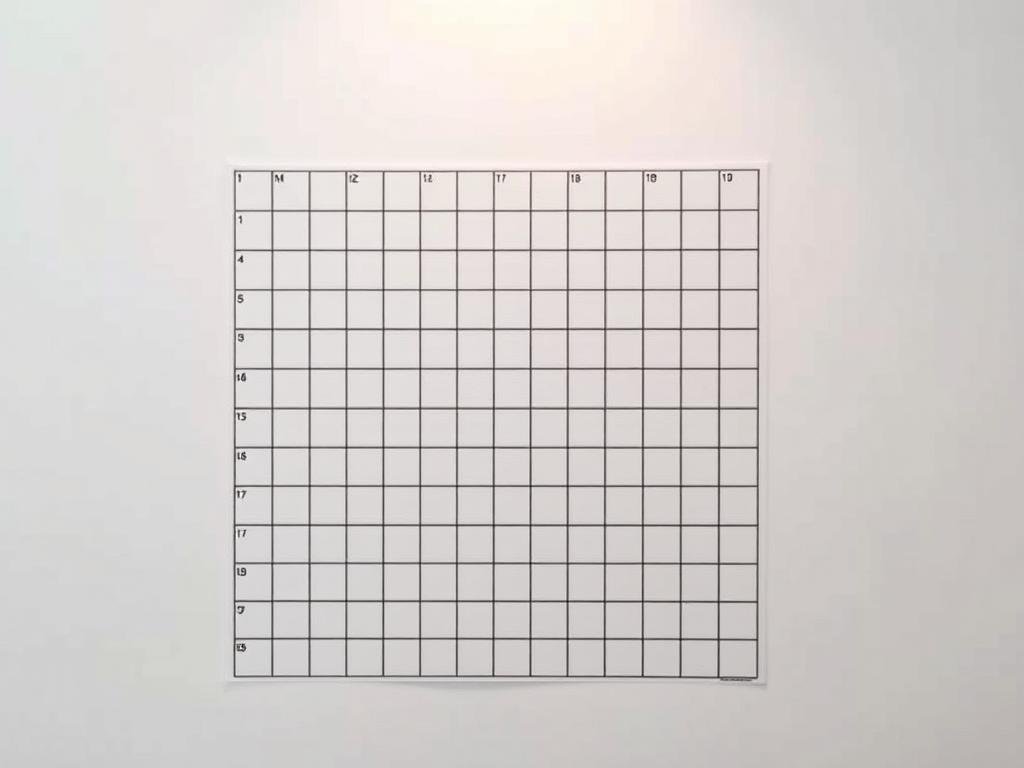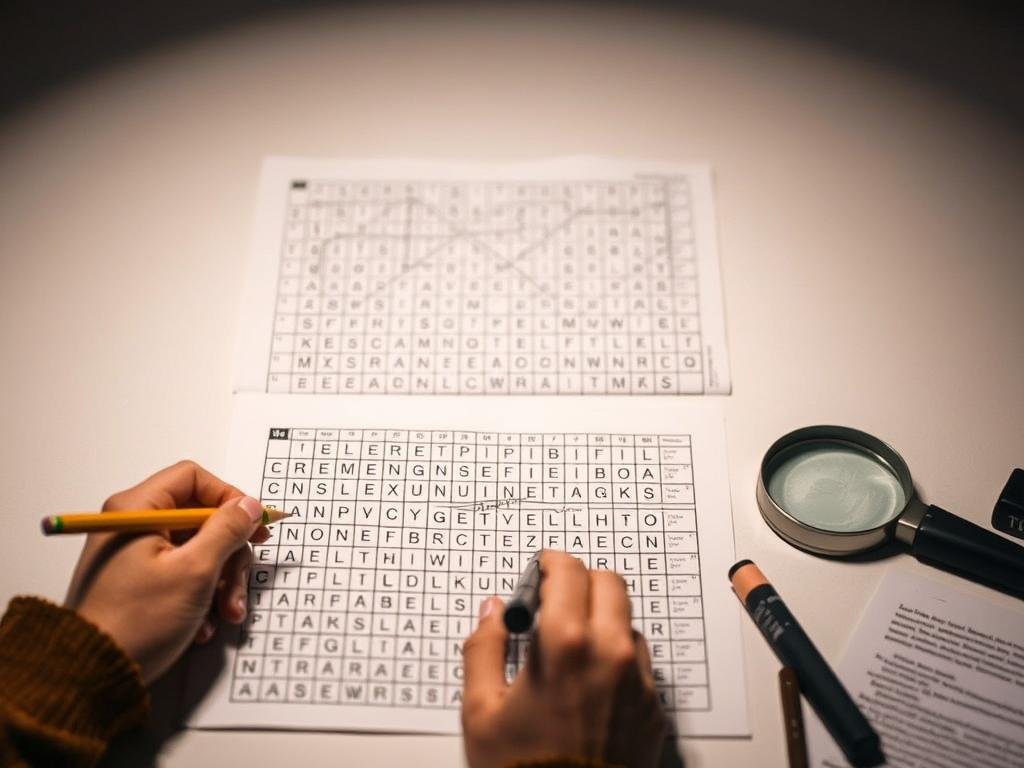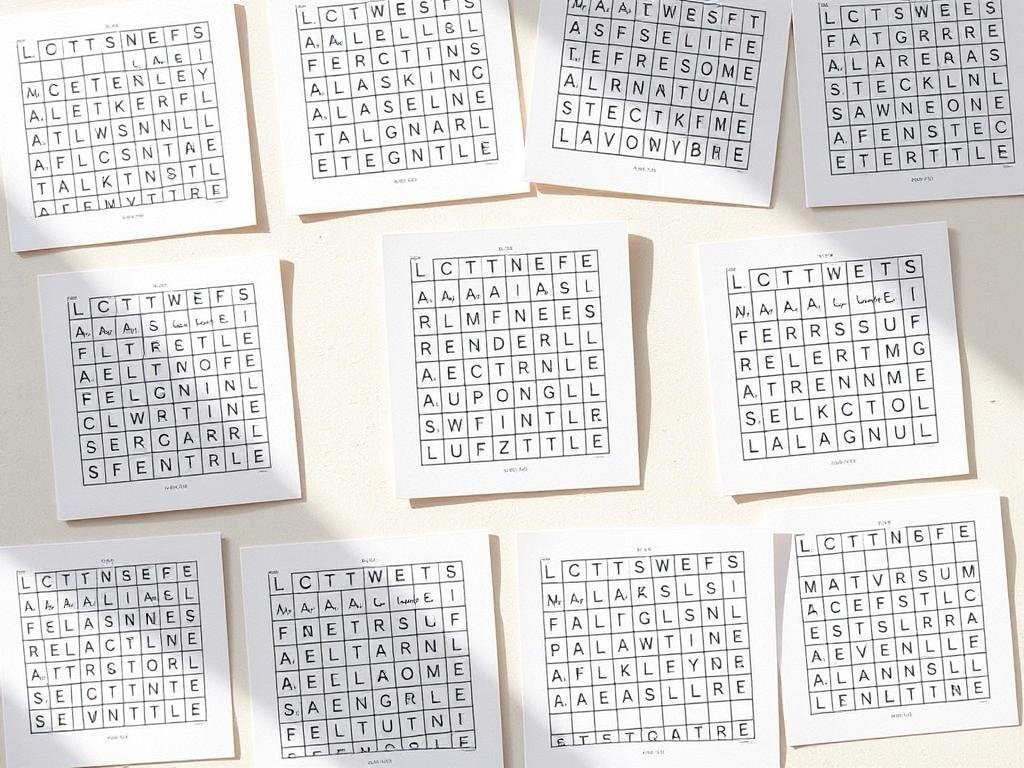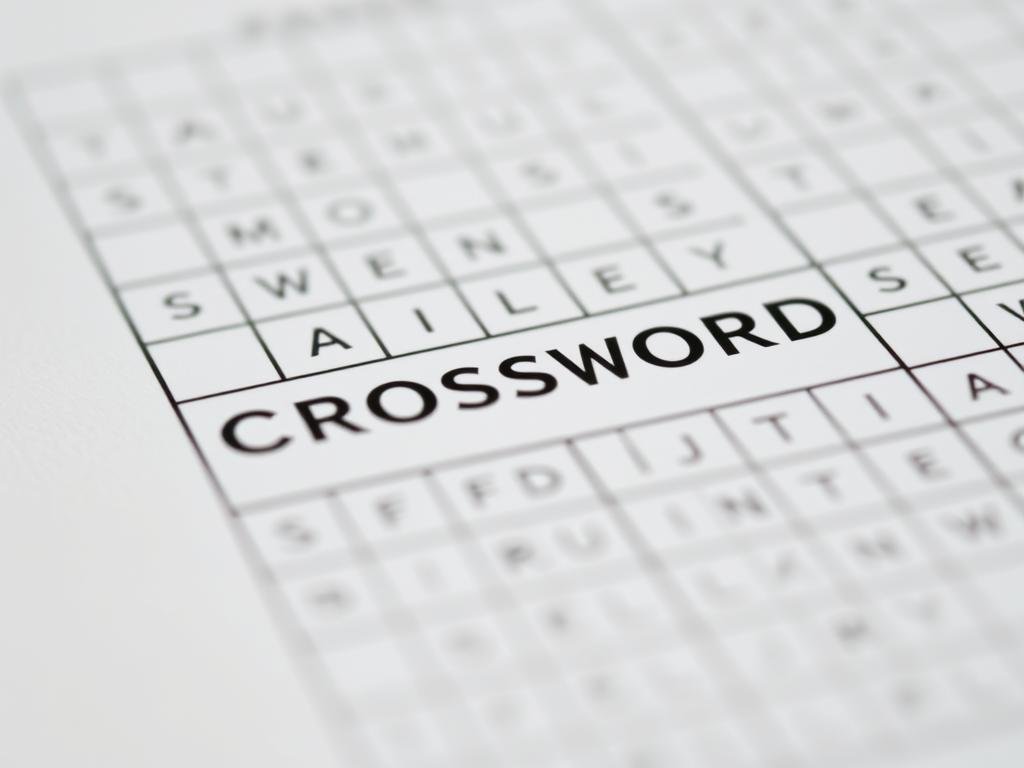Are you ready to sharpen your wits and conquer the daily challenge? The New York Times’ daily mini crossword is a popular puzzle. It engages enthusiasts with cultural references, historical callbacks, and wordplay. Its compact grid, usually 5×5, tests your knowledge and vocabulary.
Solving daily mini crosswords boosts your cognitive skills and vocabulary. It’s also fun. Our expert guide offers clever strategies, common clue patterns, and tips to speed up your solving.
Whether you’re a seasoned puzzle solver or a beginner, our guide is for you. It’s designed to help you crack the code and become a pro at crossword puzzles online.
The Rising Popularity of Daily Mini Crossword Puzzles
Daily mini crosswords are becoming more popular as a quick brain teaser. They are found in many newspapers and online. People love them because they offer a daily mental challenge without taking up too much time.
Why Mini Crosswords Are Becoming Everyone’s Daily Brain Teaser
Mini crosswords are loved by many because they are short and easy to get into. They provide a quick mental workout that can be done in just a few minutes. This makes them great for those with busy lives. Plus, new puzzles come out every day, keeping things fresh and fun.
The Key Differences Between Mini and Standard Crosswords
Mini crosswords have smaller grids, usually 5×5, compared to standard crosswords’ 15×15 grids. This makes them simpler but they also need a good vocabulary and pattern recognition skills.
| Feature | Mini Crossword | Standard Crossword |
|---|---|---|
| Grid Size | Typically 5×5 | Often 15×15 |
| Complexity | Less complex | More complex |
| Solving Time | A few minutes | 30 minutes to several hours |
The New York Times Mini Crossword is a great example of mini crosswords’ appeal. It’s released daily at 12:30 p.m. and is loved for its short format and daily challenge.
Understanding the Mini Crossword Format
Daily mini crosswords are a fun way to keep your mind sharp. Knowing how they work is key to solving them fast. You can solve them on your phone or from a printed copy.
Common Grid Layouts and Sizes
The mini crossword usually has a small grid, often 5×5. This size is great for a quick solve. The grid size might change a bit, but 5×5 is the most common for the NYT Mini Crossword.
Time Expectations for Different Skill Levels
Solving times vary with your skill level. Beginners might take 5-10 minutes. More experienced solvers can solve it in under 2 minutes. As you get better, your time will get shorter.
Popular Mini Crossword Publishers
Many publishers offer mini crosswords, but the New York Times (NYT) Mini Crossword is very popular. USA Today and puzzle apps also offer daily mini crosswords for different skill levels.
Knowing these details about mini crosswords will help you solve them with confidence. It doesn’t matter if you’re just starting or if you’re already good at it.
Essential Tools for Mini Crossword Success
Having the right tools is key to success in mini crosswords. Whether you’re new or experienced, knowing what resources are out there can help. It can make solving more fun and improve your skills.
Digital vs. Paper Solving: Pros and Cons
The choice between digital and paper solving is a big debate. Digital solving is great for those who love tech. It offers convenience and access to hints. On the other hand, paper solving is more hands-on and can be more fun for some.
Top Mini Crossword Apps and Websites
For digital lovers, there are many apps and websites to choose from. The NYT Mini Crossword is a favorite, with daily puzzles and an easy-to-use interface. Other great options include Crossword With Friends and various Mini Crossword apps.
Helpful Resources for Finding Mini Crossword Answers
Stuck on a puzzle? There are many resources to help. CNET offers NYT puzzle hints, which are super helpful. Online forums and communities also share tips and solutions, making solving a team effort.
| Resource | Type | Features |
|---|---|---|
| NYT Mini Crossword App | Mobile App | Daily Puzzles, Hints, Timing |
| CNET’s NYT Puzzle Hints | Website | Hints, Solutions, Tips |
| Crossword With Friends | Mobile App | Daily Puzzles, Social Sharing |
Beginner’s Guide to Solving Mini Crosswords
Starting with mini crosswords is a fun way to sharpen your mind and learn new words. They’re a great first step into the world of word puzzles. They offer a fun challenge.

Starting with the Easiest Clues First
Begin with the clues that seem simple. These are often the answers that are obvious or connect with other clues you’ve solved. Starting with the easy ones helps you build confidence and momentum.
Building Your Crossword Vocabulary
As you solve more mini crosswords, you’ll see the same words and patterns. To grow your vocabulary, get to know these common answers. Using a crossword dictionary or app can really help.
Common Beginner Mistakes to Avoid
One big mistake is filling in answers without checking them against the clues. Make sure your answers match the clues. Another error is not using elimination for tricky clues. By eliminating wrong answers, you can guess right more often.
Follow these tips and keep practicing. With patience and persistence, you’ll get better at mini crosswords. Happy puzzling!
Decoding Clue Types in Daily Mini Crosswords
To do well in daily mini crosswords, knowing the different clue types is key. You’ll find many clue styles that need different solving methods. As “The New York Times” says, “Crossword clues are a game of wits, and knowing their types is essential for success.
Straight Definition Clues: The Basics
Straight definition clues are easy to understand. They give a clear description of the answer, often using synonyms or simple definitions. For example, “Flower that’s also a girl’s name” might mean “LILY.” To solve these, just think of words that match the given definition.
Wordplay and Pun-Based Clues
Wordplay and pun-based clues are clever. They use language in creative ways, like puns, double meanings, or anagrams. For instance, “Bird’s home” could be “NEST,” using the word “home” in a clever way. To solve these, you need to think creatively and consider different meanings of the clue.
Fill-in-the-Blank Strategies
Fill-in-the-blank clues give you part of the answer with missing letters. To solve these, use the given letters and the clue’s context to guess the missing parts. For example, if the clue is “T _ _ LE,” guessing “TABLE” might work if it fits the letters and other clues.
Abbreviation and Acronym Clues
Abbreviation and acronym clues need you to know common abbreviations. For example, “Computer input device” might be “KB” (keyboard). Knowing common abbreviations helps you solve these clues well.
By learning these clue types, you’ll get better at solving daily mini crosswords. As you practice, you’ll get better at spotting and solving different clue styles. This will make you a skilled crossword solver.
Time-Saving Techniques for Quick Puzzle Solving
Speed is key when solving mini crosswords. There are ways to get faster. Experienced solvers use strategy and know the puzzle’s layout well.

Pattern Recognition Methods
Pattern recognition is a great technique. Knowing common letter patterns and word endings helps a lot. For example, words ending in “-ed” or “-ing” are common.
Also, look for patterns in the grid. This includes consecutive letters or mirrored patterns.
Cross-Referencing Strategies
Cross-referencing is another strategy. It involves using clues that intersect to find answers. For instance, knowing a 3-letter answer that intersects with a 5-letter answer can help solve both.
This method is very useful in NYT mini crosswords. Clues often overlap there.
| Technique | Description | Benefit |
|---|---|---|
| Pattern Recognition | Identifying common letter patterns and word endings | Quickly fills in answers |
| Cross-Referencing | Using intersecting clues to deduce answers | Efficiently solves multiple clues |
| Skipping Difficult Clues | Moving on from challenging clues to return to later | Saves time and reduces frustration |
When to Skip and Return to Difficult Clues
Knowing when to skip a tough clue is important. Spending too much time on one clue can slow you down. It’s better to move on to easier ones and come back later.
Using these techniques can make you faster and more confident at solving mini crosswords and other word challenges. Whether you’re new or experienced, these strategies will help you solve even the toughest brain teasers.
Mastering the NYT Mini Crossword
To master the NYT Mini Crossword, you need to know its special traits and how to handle its daily puzzles. The New York Times Mini Crossword is a favorite wordplay game. It’s known for its small grid and smart clues.
Unique Features of the New York Times Mini
The NYT Mini Crossword is different from other puzzles because of its small size and daily release. This schedule helps you keep up a regular solving routine. You can also see how you’re improving over time. The Mini Crossword has many types of clues, from easy definitions to tricky wordplay.
- Concise Grid: The 5×5 grid is easy for everyone to solve.
- Daily Puzzles: New puzzles come out every day, keeping you on your toes.
- Varied Clue Types: Clues vary from simple to complex, making the game fun and tough.
Day-of-Week Difficulty Progression
The NYT Mini Crossword gets harder from Monday to Saturday. Sunday’s puzzle is bigger but easier than the daily ones. Knowing this can help you plan how to solve the puzzles.
- Monday: Easier clues to get you started
- Tuesday: Slightly more challenging with some wordplay
- Wednesday: More complex clues and themes begin to appear
- Thursday: Challenging clues with a mix of straightforward and wordplay clues
- Friday: More difficult clues, often with puns or double meanings
- Saturday: The most challenging day, with complex themes and tricky clues
Famous Constructors and Their Signature Styles
The NYT Mini Crossword has puzzles from many constructors, each with their own style. Knowing these styles can help you solve clues better. Some constructors are known for their clever wordplay, while others focus on pop culture or history.
By understanding the unique features, difficulty progression, and constructor styles, you can get better at the NYT Mini Crossword. You’ll enjoy it even more.
How to Solve Mini Crossword Puzzles in Record Time
Mini crossword fans can get better at solving them fast. It helps to know the tricks used by experts. They also know how to make puzzles.

Speed-Solving Techniques from Champions
Champions have special ways to solve mini crosswords quickly. They start with the easiest clues to get going. They also use word lists and patterns to fill in answers fast.
They have a plan for each part of the puzzle. By using these speed-solving techniques, you can solve puzzles much faster.
Recognizing Constructor Patterns and Tendencies
Knowing what constructors do can help you solve mini crosswords better. Constructors often use the same words and themes. They also have certain clue structures and wordplay.
They might use the same answers or patterns in different puzzles. By spotting these patterns, you can guess and solve clues faster.
Developing Your Personal Solving System
To solve mini crosswords quickly, you need a system that works for you. It’s about knowing your strengths and weaknesses. It’s also about having a consistent way to solve puzzles.
Keep improving your methods based on what you learn. With practice, you’ll get good at solving mini crosswords fast. They’ll become fun brain teasers and word challenges.
Common Mini Crossword Themes and Recurring Clues
To get good at mini crosswords, knowing common themes and clues is key. These patterns help you solve puzzles faster and more accurately.
Seasonal and Holiday Patterns
Mini crosswords often have seasonal and holiday themes. For example, clues about Valentine’s Day pop up in February. Halloween answers show up in October. Knowing these patterns helps you guess answers quicker.
Pop Culture References You Should Know
Mini crosswords include lots of pop culture references. This can be movie quotes or famous people. Keeping up with music, movies, and TV helps you solve clues. A clue might ask about a recent Oscar winner or a hit show.
Frequently Repeated Answers in Mini Crosswords
Some answers show up a lot in mini crosswords. This is because the puzzles are small and clues are short. Words like “ERNE” and abbreviations like “NYC” are common. Knowing these answers helps a lot.
Learning these recurring clues and answers makes solving mini crosswords easier. You’ll feel more confident and quick in your daily challenges.
Tackling Challenging Mini Crossword Clues
To solve tough mini crossword clues, you need different strategies. These clues often need vocabulary, pattern recognition, and thinking outside the box.
Breaking Down Complex Wordplay
Complex wordplay is common in crossword clues. Understanding types like puns, anagrams, and double meanings is key. Knowing the wordplay type helps you solve the clue more effectively.
- Identify the type of wordplay used in the clue.
- Look for keywords that indicate the type of wordplay.
- Use your knowledge of language patterns to decipher the clue.
Using Context Clues Effectively
Context clues are vital in puzzle solving. By looking at the clues around the tough one, you can get clues. Use intersecting answers to help fill in the blanks.
- Examine the clues and answers surrounding the challenging clue.
- Use the intersecting answers to help you fill in the blanks.
- Consider the theme of the mini crossword and how it might relate to the challenging clue.
When to Make Educated Guesses
At times, you might have to guess. This is okay in brain teasers like mini crosswords. Think about the context and clues you have.
Dealing with Unfamiliar References
References you don’t know can be hard. Keep a list of common references and allusions in wordplay games. Online resources can also help with unknown terms.

Building a Daily Mini Crossword Habit
Creating a daily routine for mini crosswords can keep you interested and driven. Here are some tips to help you.
Setting Up a Solving Routine
Choose a set time and spot to solve your mini crossword each day. Consistency is key to making it a habit. It could be during your morning coffee or before bed. Find a time that fits your life.
Tracking Your Progress and Times
Keep a record of how long it takes you to solve each crossword. This will show you how you’re improving. It will also boost your motivation as you get better.
Joining Mini Crossword Communities and Competitions
Join online groups or competitions to meet other mini crossword fans. It makes solving more fun and adds a competitive edge. Plus, you’ll learn new ways to solve puzzles.
Conclusion: Enjoying Your Daily Mental Workout
Solving daily mini crosswords becomes a fun part of your day. It gives you a sense of pride and keeps your mind active. The NYT Mini Crossword is great for daily brain teasers and word challenges.
By using the tips from this article, you’ll get better at solving mini crosswords. You’ll feel more confident when facing daily puzzles. Solving them will become a rewarding experience.
So, keep solving and enjoy the mental workout. With regular practice, you’ll solve mini crosswords faster. It will stay a fun way to challenge your mind.
FAQ
What is a daily mini crossword?
A daily mini crossword is a small puzzle, usually 5×5 or 7×7. It’s published every day. It has clues to solve.
How do I start solving mini crosswords?
Start with the easy clues first. Build your vocabulary. And avoid common mistakes.
What are the benefits of solving daily mini crosswords?
Solving them improves your mind. It’s fun and challenging. And it helps you stay consistent.
What are the best tools for solving mini crosswords?
Top apps and websites are great. You can use digital or paper methods. And find answers with resources.
How can I improve my speed in solving mini crosswords?
Practice speed techniques. Recognize patterns. And develop your solving system.
What are some common themes and recurring clues in mini crosswords?
Look for seasonal and holiday clues. Pop culture references are common. And some answers repeat often.
How can I tackle challenging mini crossword clues?
Break down wordplay. Use context clues. And guess when you’re unsure.
Can I join a community to solve mini crosswords with others?
Yes, join communities and competitions. Solve puzzles together. Track your progress and compete.
What is the NYT Mini Crossword, and how is it different?
The NYT Mini Crossword is a daily puzzle by The New York Times. It has unique features. Difficulty changes by day. And it has famous constructors’ styles.
Are there any tips for mastering the NYT Mini Crossword?
Understand its features. Recognize difficulty changes. And get to know famous constructors’ styles.
